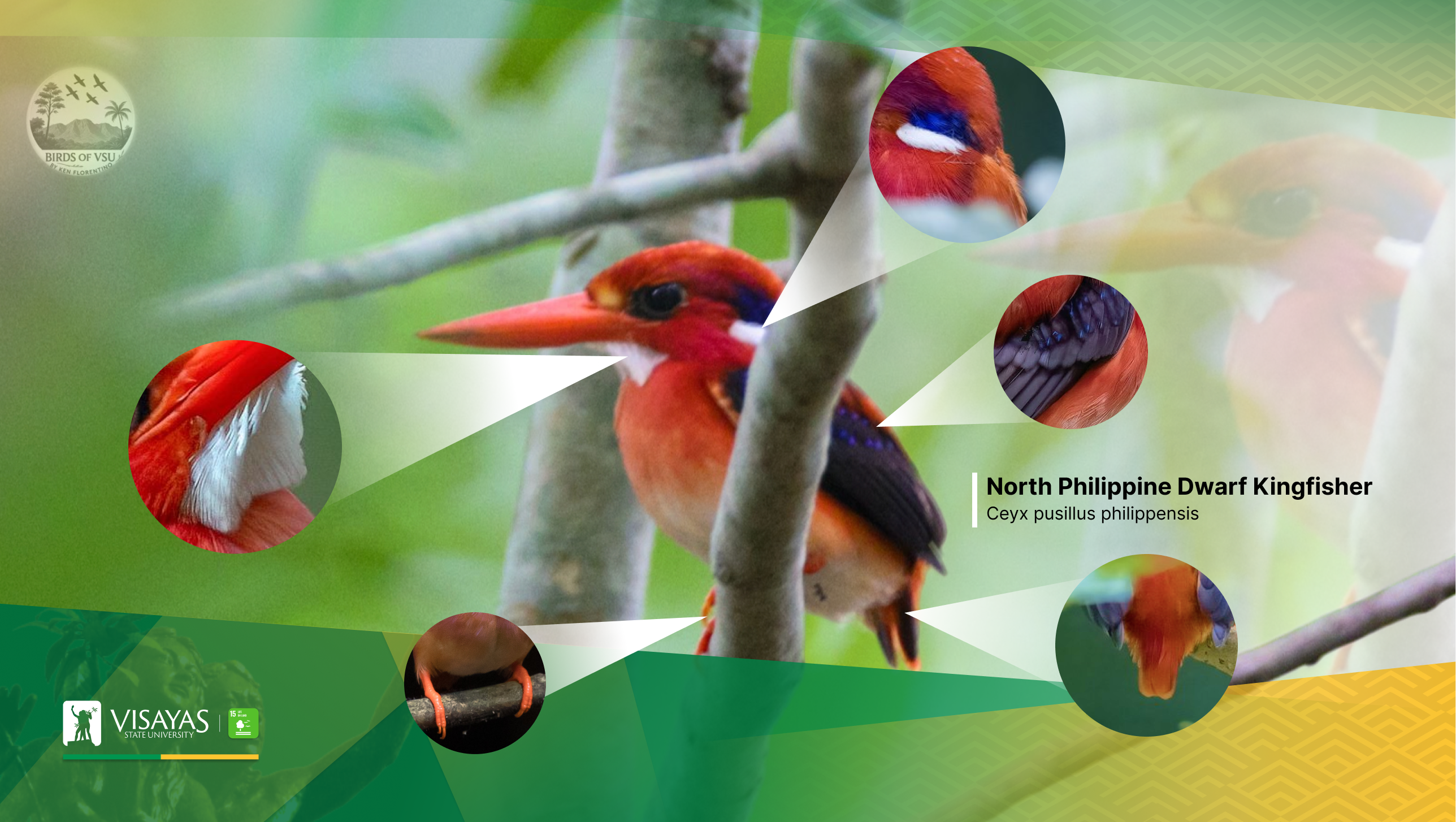A Tiny Jewel in the Forests of VSU: The North Philippine Dwarf Kingfisher
- Details
- Written by Mike Laurence V. Lumen
-
Published: 25 October 2025

North Philippine Dwarf Kingfisher | Captured by Ken Florentino, VSU alumnus (BS Environmental Management, MS Tropical Ecology)
When people think of Leyte, the images that usually come to mind are its history, stunning landscapes, or delicacies like binagol and moron. Yet, hidden within its forests is a tiny creature that represents one of the island’s most remarkable natural treasures–the North Philippine Dwarf Kingfisher (Ceyx melanurus).
This bird, measuring only 12 to 13 centimeters, is the smallest kingfisher in the Philippines. Despite its delicate size, it is an unforgettable sight with a vivid mix of fiery orange, deep violet, and a coral-red bill that makes it appear like a gem darting through the greenery.
It is also one of the most secretive birds in the archipelago, rarely seen because of its preference for the dense understory of intact forests.
Until recently, the Philippine dwarf kingfishers were considered a single species. Taxonomic revisions have since split them into two–the North Philippine Dwarf Kingfisher, found in Luzon, Samar, and Leyte, and the South Philippine Dwarf Kingfisher, confined to Mindanao.
This makes Leyte one of the few islands where both species occur, which gives the region unique importance in terms of biodiversity.
At Visayas State University (VSU), the forests of Mt. Pangasugan is home to this elusive bird. Wildlife photographers and researchers occasionally document encounters, though such sightings remain rare and exciting.
One memorable record came from Ken Florentino, a VSU alumnus who completed his BS in Environmental Management and MS in Tropical Ecology.
His photograph of the kingfisher perched quietly on a branch within the forest is a reminder that even in academic spaces, life of extraordinary beauty thrives just beyond the trails.
Like its larger relatives, the dwarf kingfisher feeds on insects, spiders, and small forest invertebrates. Its dependence on undisturbed forests also makes it an indicator species that portions of the ecosystem remain healthy and intact, while its absence could signal habitat loss and degradation.
Unfortunately, threats persist. Forest clearing, land conversion, and logging continue to reduce the available habitat for many forest-dependent birds. The North Philippine Dwarf Kingfisher, already naturally rare and difficult to spot, is increasingly at risk of losing the spaces it needs to survive.
More than just a fleeting sight, the bird symbolizes the fragile yet enduring biodiversity of VSU and the region. Protecting the habitats where the dwarf kingfisher lives safeguards not only a single species but also the wider web of life that makes Mt. Pangasugan and Leyte extraordinary.
References:
- Collar, N.J., et al. (2020). Birds of the Philippines: A Guide to the Important Bird Areas and Endemic Species. Haribon Foundation.
- del Hoyo, J., Elliott, A., & Christie, D. (eds.). (2001). Handbook of the Birds of the World, Vol. 6: Mousebirds to Hornbills. Lynx Edicions, Barcelona.
- Kennedy, R.S., Gonzales, P.C., Dickinson, E.C., Miranda Jr., H.C., & Fisher, T.H. (2000). A Guide to the Birds of the Philippines. Oxford University Press.
- Oriental Bird Club (2022). Taxonomic updates on Philippine birds. Retrieved from https://orientalbirdclub.org
This article is aligned with the Sustainable Development Goal (SDG) 15: Life on Land.

